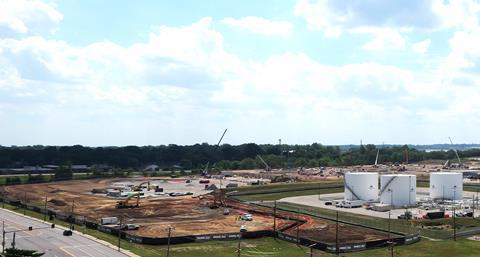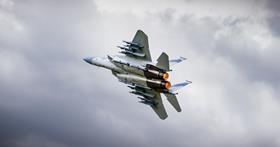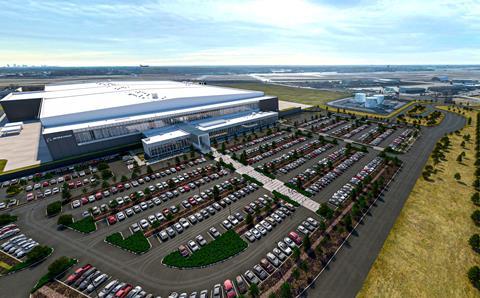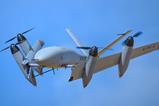US airframer Boeing is making a big bet on the future of fighter aircraft manufacturing.
The company’s defence unit, Boeing Defense, Space & Security (BDS), has begun construction of a $1.8 billion classified facility near its headquarters in St. Louis, Missouri, with an eye toward attracting new business.
Boeing on 26 June said the new site, which is adjacent to the company’s existing fighter manufacturing campus at St Louis Lambert International airport, is intended to “support future combat aircraft programmes”, without naming specific customers or projects.
A billboard outside the construction area, which Boeing calls the “Brownleigh Site”, prominently features a sixth-generation-style black jet and proclaims Boeing’s commitment to fighter manufacturing.
Notably, the company has committed to building the new 102,000sq m (1.1 million sq ft) advanced combat aircraft plant before actually securing a contract to build any next-generation fighters.
“Our military customers have urged the industrial base to invest now to ensure the United States and its allies can keep pace with rapidly advancing and increasingly aggressive near-peer threats,” says Steve Nordlund, Boeing’s vice-president of air dominance. “We listened to our customers, leaned forward and made the most significant investment in the history of Boeing’s defence business.”
The BDS St. Louis complex is already home to facilities assembling the F/A-18 Super Hornet and F-15EX Eagle II fighters and T-7A Red Hawk trainer. Work is also nearing completion in nearby Mascoutah, Illinois on a separate production facility to assemble the MQ-25 Stingray autonomous refueller.
However, Boeing’s significant investment in a new factory is, at the moment, looking increasingly risky.

Support at the Pentagon for sixth-generation fighter initiatives appears to be waning. The US Navy is reducing funding for its F/A-XX development effort and senior US Air Force (USAF) officials recently walked back their commitment to the service’s Next Generation Air Dominance (NGAD) programme to succeed the Lockheed Martin F-22 Raptor.
“It is going to be a challenging next couple of years to sort out the resources,” USAF chief of staff General David Allvin said on 13 June at an Air and Space Forces Association roundtable event.
When asked if the service could or would remain committed to NGAD, at the same time it is seeking to rapidly develop low-cost, autonomous Collaborative Combat Aircraft, Allvin was far from emphatic.
“We’re going to have to make those choices, make those decisions and… that’s going to probably play out in the next couple of years,” the four-star general said.

Air force secretary Frank Kendall, the service’s top civilian official and staunch proponent of fleet modernisation efforts, also appeared non-committal toward the signature sixth-generation fighter initiative in a recent interview with Aviation Week, saying the service would need to “take another look” at NGAD in light of budgetary pressures.
While Boeing has not formally acknowledged its participation in the highly-classified NGAD effort, the company is widely believed to be a finalist for the contract, alongside rival Lockheed. Although the USAF only released a formal request for proposal solicitation in 2023, prototypes are rumoured to already be flying.
The NGAD solicitation indicated the USAF intended to select a primary manufacturer for the new fighter by the end of 2024.
Aerospace titans Boeing and Lockheed are the only two manufacturers of fighter aircraft in the USA. Stealth aircraft producer Northrop Grumman publicly bowed out of the NGAD competition in 2023.
While Boeing is officially not acknowledging any connection with the USAF programme, the pre-emptive investment in a classified fighter factory appears to be part of the company’s strategy to secure an NGAD win, which is seen as vital to the Boeing unit’s future.
“We have to make some bets,” Nordlund says, overlooking the Brownleigh Site from the seventh floor of BDS headquarters in St. Louis.
He notes F/A-18 production is currently projected to conclude in 2027, while the USAF has cut its projected acquisition of the F-15EX to under 100 aircraft. It will also be several years before some of the promising new development programmes reach the more lucrative, full-rate production stage.
“We’re on fixed-price development programmes with T-7A and MQ-25,” Nordlund says. “So that’s not where we’re making our money.”
Failure to secure a new fighter contract would inject an uncomfortable amount of uncertainty into the future of Boeing’s highly-specialised manufacturing workforce.
The $1.8 billion factory investment is intended to signal Boeing’s commitment to producing next-generation aircraft for the USA. The site is being constructed in accordance with unspecified US government security and classification requirements, meaning it can only be used for domestic customers.
While that could change in the future, Boeing clearly hopes the costly investment will entice the Pentagon to award the company what could be a once-in-a-generation opportunity.
Rival Lockheed ran the tables on fifth-generation fighter production, winning both the air superiority and strike fighter platforms with the F-22 Raptor and F-35 Lightning II, respectively.
Northrop secured the USAF’s stealth bomber recapitalisation contract with its B-21 Raider as the successor another Northrop creation: the B-2 Spirit flying wing.
With F-35s projected to remain in service for decades to come, that leaves only limited opportunity for Boeing to secure a next-generation fighter contract. Failure to do so could jeopardise the already limited industrial base that supports fighter aircraft production within the USA.
The precarious nature of that system was highlighted during a 25 June tour of Boeing’s F-15EX assembly line. During that visit, vice-president of manufacturing James Dewees, who began his career with Boeing as an aviation mechanic, told FlightGlobal that just over 600 workers manage aircraft production for that entire fighter platform.
Such small and specialised labour forces are highly vulnerable to production disruptions, as witnessed across the aerospace sector when disruptions from the Covid-19 pandemic pushed many workers into retirement or competing industries.
Many aircraft manufacturers, and their suppliers, still report lingering issues within the supply chain and their own workforces as a result of those turbulent years.

Boeing says construction work at the secure Brownleigh Site is currently projected to be completed in 2026, although Nordlund says the company has some flexibility to adjust the timeline.
The project represents a $1.8 billion wager by the airframer’s executives and board that Boeing will have secured work for the factory by that time.































